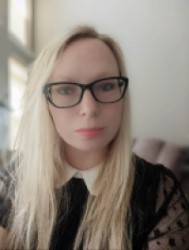 We wanted to get to know Jennia D’Lima (NAIWE’s Creative Nonfiction Expert) better, so last month we sat down with her. Here are some thoughts she shared with us.
We wanted to get to know Jennia D’Lima (NAIWE’s Creative Nonfiction Expert) better, so last month we sat down with her. Here are some thoughts she shared with us.
How do writers find out if their journey has an audience?
No matter what you’re writing, it never hurts to browse the bookshelves (at a bookstore, either an online or physical location, or the local library) and see both what’s already out there and what isn’t.
But first, ask yourself why the size of the audience matters; what do you hope to achieve by writing this piece? To share your unique adventures with close friends and family, to show others why this location shouldn’t be missed, or to make the bestseller lists? Doing further audience research after this question has been answered will guide you toward determining whether or not the chosen topic and/or format will need to be adjusted to reach your publication goals. For instance, if you dream of your book reaching bestseller status and a quick online search shows that the market is already flooded with books about hiking the Appalachian Trail, that might be a sign that your book would be lost amongst all the others—unless you have such a one-of-a-kind approach or experience that it’s bound to stand out.
The above question will also lead to the next question that will help determine whether your book has an audience: who is my ideal reader? If the answer is “everyone,” it’s time to niche down since there isn’t a single book that appeals to everyone (and it would be impossible to market, because how do you find out where “everyone” hangs out/what “everyone” is interested in and what appeals to them?). Once you’ve pinned down your reader, go to the places they go (hiking clubs, wine tastings, online forums) and see what the participation level is like. This could be an indicator as to the expected audience size of your published piece.
What style guide is the most conducive for travel writing?
That will largely depend upon the chosen structure of the writing. For example, a blog post doesn’t need to worry about style guides so much as basic grammar and spelling, while a travel memoir will likely want to refer to the Chicago Manual of Style.
Can authors of all genres expand their stream of income through travel writing?
Absolutely! The key is to be passionate about your chosen topic. After that, finding the right “home” for your work will ensure it reaches its intended audience. Maybe that’s on YouTube, where the text (which could be converted into a spoken component) is accompanied by photos and videos. Or perhaps you’ve created a series of shorter pieces that could be used on a pay-to-read platform. There are multiple opportunities out there, and we’ll be exploring how to find some of those in the webinar (including options for posting your work for free if turning it into a money-making endeavor isn’t your priority).
——————
Writers interested in recounting their journeys have various options available to them, including travelogues and multimedia accounts of globe-spanning adventures. But which form is the best fit for what they’d like to share? Does an account of cheese tasting across France need the same amount of depth and detail as a story about a six-month long retelling of a hike through each of Canada’s provinces? In this webinar, we’ll learn about some of the most popular forms of travel writing and look at how narrowing down your topic will help you choose a form and identify your audience.
You can join in this conversation on February 24 at 7:00 pm eastern, when NAIWE will host a discussion on travel writing. The cost for NAIWE members is only $10! Nonmembers can join for $30. Register today!
Jennia Herold D’Lima is a full-blown logophile. She joined her high school’s newspaper in ninth grade, winning statewide awards for her writing, and expanded her journalism skills by continuing to write and edit throughout her high school years and as a college freshman. While earning her BA in psychology (and minoring in cultural anthropology with a focus on precolonial Mesoamerica) and her MA in applied developmental psychology, her writing and editing naturally skewed toward all things academic. Writing for and publishing in peer-reviewed journals, editing papers for classmates, and writing parenting resource guides honed her research skills. Jennia joined multiple professor-led research groups and completed four internships throughout her academic career. After graduating with a master’s, she worked at a national nonprofit in Washington, DC, and as an assistant researcher at the University of Washington in Seattle. Jennia gradually transitioned to full-time editing. As the host of the Writing & Editing podcast, she loves connecting with others in the community. Jennia enjoys traveling, volunteering, and taking creative photos of books and book-related items in those rare moments when she is not reading or editing.

Leave a Reply